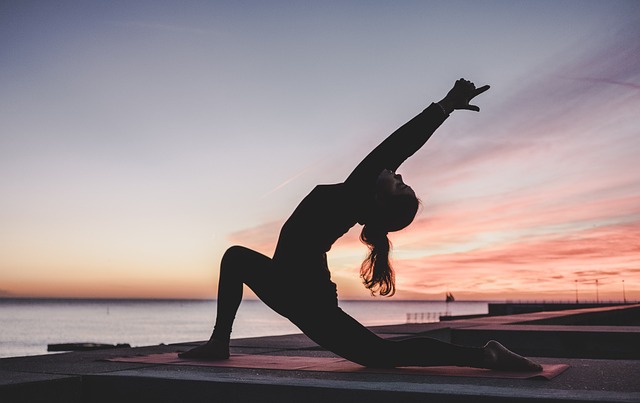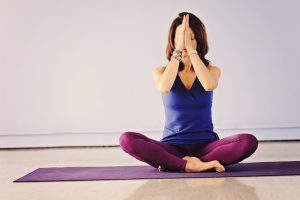Tight hamstrings can be a common source of discomfort and restriction in movement. Whether from prolonged sitting, strenuous exercise, or other factors, addressing tight hamstrings is crucial for maintaining overall flexibility and preventing injury. In this article, we’ll explore some effective yoga poses specifically targeted at stretching and releasing tension in the hamstrings.
Understanding Tight Hamstrings
Causes of Tight Hamstrings
Sedentary lifestyle and overuse or strain are primary culprits behind tight hamstrings. Prolonged periods of sitting can lead to shortened and tight muscles, while repetitive movements or excessive exercise can also contribute to muscle tightness.
Importance of Flexibility
Flexible hamstrings are essential for optimal movement and function. Improved flexibility not only enhances athletic performance but also reduces the risk of injury, particularly in activities that involve bending, lifting, or reaching.
Yoga Poses for Stretching Hamstrings
Forward Fold (Uttanasana)
Forward Fold is a classic yoga pose that targets the hamstrings, calves, and spine. To perform Uttanasana, stand with feet hip-width apart, exhale, and fold forward from the hips, keeping the spine long and the knees slightly bent if necessary. Allow the torso to drape over the legs, reaching fingertips towards the floor or resting hands on shins or blocks for support.
Downward-Facing Dog (Adho Mukha Svanasana)
Downward-Facing Dog is a foundational yoga pose that offers a deep stretch for the entire posterior chain, including the hamstrings, calves, and back. Begin on hands and knees, tuck toes under, and lift hips towards the ceiling, forming an inverted V-shape with the body. Press palms into the mat, lengthen through the spine, and engage the thighs to extend heels towards the floor.
Head-to-Knee Forward Bend (Janu Sirsasana)
Janu Sirsasana is a seated forward bend that targets one leg at a time, providing a focused stretch for the hamstrings and groin. Sit with one leg extended and the sole of the opposite foot resting against the inner thigh of the extended leg. Inhale to lengthen the spine, then exhale to hinge forward from the hips, folding over the extended leg. Reach towards the foot or shin with hands, maintaining a flat back and open chest.
Incorporating Yoga into Your Routine
Tips for Safe and Effective Practice
Before diving into yoga poses, it’s essential to warm up the body with gentle movements to prepare muscles and joints for stretching. Dynamic stretches and mobility exercises can help increase circulation and range of motion, reducing the risk of injury during yoga practice. Additionally, listen to your body and honor its limits, avoiding forceful or aggressive stretching that can lead to strain or injury. Modify poses as needed, using props like blocks, straps, or blankets to support and enhance your practice.
Consistency and Patience
Consistency is key when it comes to improving flexibility and releasing tight muscles. Regular yoga practice, even just a few times a week, can yield significant benefits over time. Remember that progress may be gradual, so be patient and celebrate small victories along the way. With dedication and perseverance, you’ll gradually experience increased flexibility and freedom of movement in your hamstrings and throughout your body.
Conclusion: Embrace Yoga for Flexible Hamstrings
Incorporating yoga into your fitness routine can be a valuable tool for improving hamstring flexibility and overall mobility. By practicing targeted yoga poses regularly and with mindfulness, you can release tension, increase range of motion, and enjoy the benefits of flexible hamstrings for enhanced performance and well-being.
FAQs
How often should I practice yoga for tight hamstrings?
Consistent practice is key for improving hamstring flexibility. Aim for at least 2-3 yoga sessions per week, incorporating a variety of poses that target the hamstrings and surrounding muscles.
Can yoga help prevent hamstring injuries?
Yes, regular yoga practice can strengthen and lengthen the hamstrings, reducing the risk of strains and injuries. Focus on proper alignment and technique in poses to avoid overstretching or putting excessive strain on the muscles.
Are there any specific precautions I should take when practicing yoga for tight hamstrings?
If you have existing hamstring injuries or tightness, approach yoga practice with caution and consult with a qualified yoga instructor or healthcare professional for personalized guidance. Avoid forcing or pushing into poses and listen to your body’s cues to prevent overexertion.
How long does it take to see improvements in hamstring flexibility with yoga?
The timeframe for seeing improvements in hamstring flexibility can vary depending on factors such as individual flexibility, consistency of practice, and the intensity of yoga sessions. With regular practice and proper technique, you may begin to notice improvements within a few weeks to months.
Can I practice yoga for tight hamstrings if I’m a beginner?
Absolutely! Yoga poses can be modified to suit practitioners of all levels, including beginners with tight hamstrings. Start with gentle stretches and gradually progress to more advanced poses as your flexibility and strength improve. Remember to listen to your body and respect its limitations as you explore your practice.




